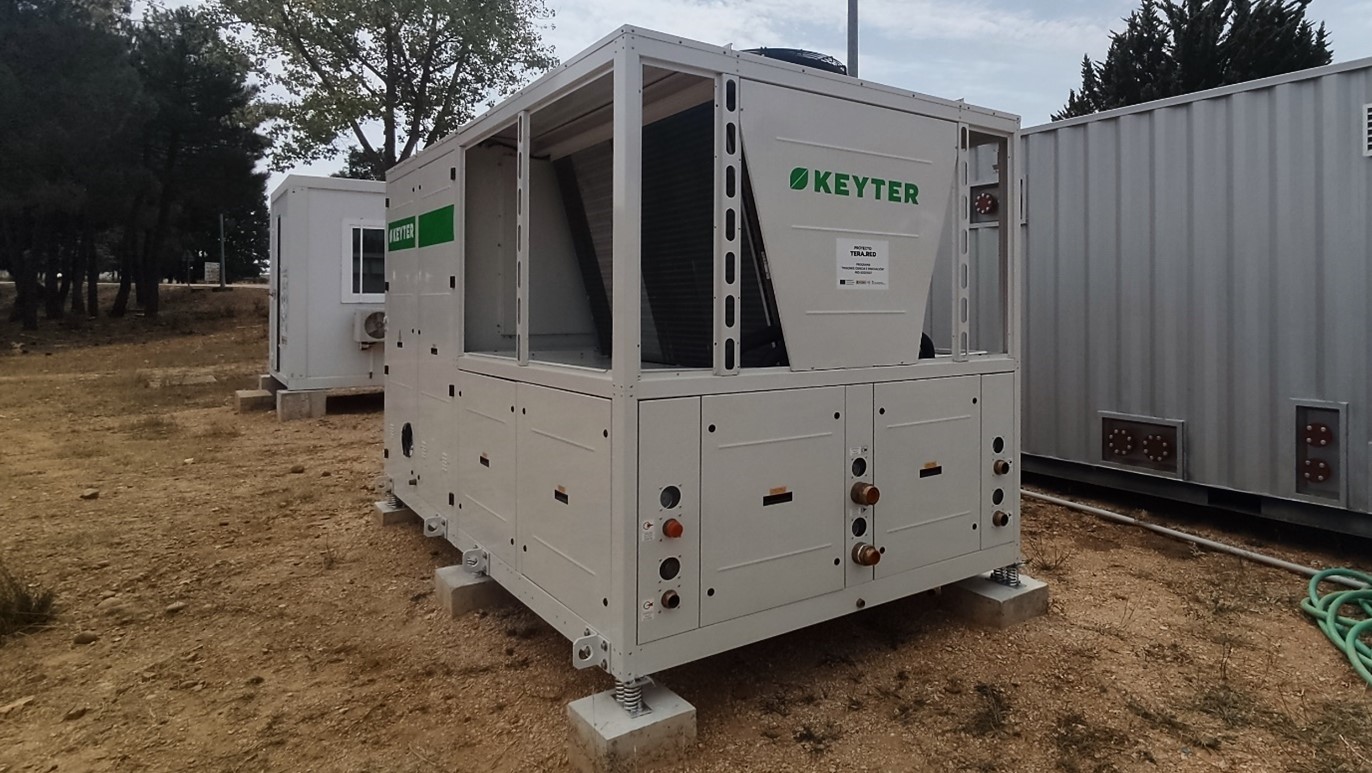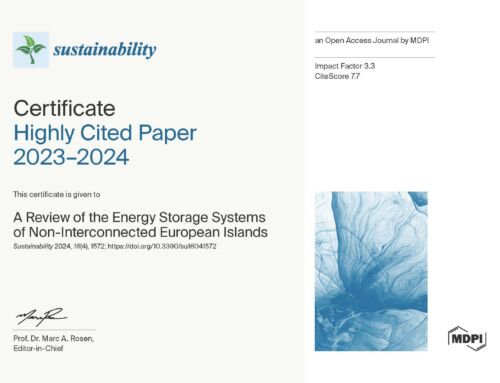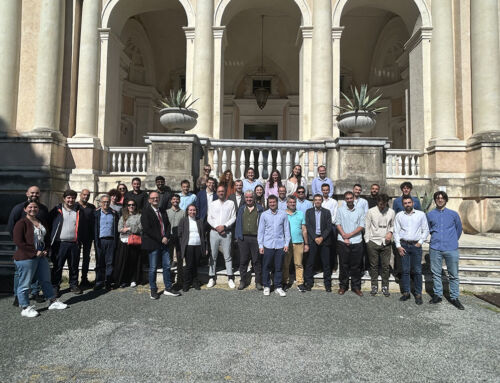The SINNOGENES project has now progressed beyond its halfway point, reaching several key milestones in preparation for the next experimental phase of Demo#2. The project focuses on two main objectives regarding Demo#2:
- Stabilizing the grid in frequency and voltage using two fast-response energy storage prototypes – a supercapacitor bank and a flywheel.
- Integrating the district heating network with the electrical microgrid, enabling coordinated operation through seasonal thermal energy storage.
For the first objective, both the supercapacitor bank and the flywheel have been successfully installed, fully integrated into the microgrid, and are now ready for initial charge–discharge testing. The supercapacitor bank has already undergone preliminary trials, achieving charge and discharge cycles of up to 50 kW – around half of its nominal capacity – with a response time of less than one second (limited only by the current data acquisition system).

Supercapacitor Bank Voltage Measurement Test

Supercapacitor Bank Active Power Register Data
On the thermal storage side, this week marked another major step: the arrival and successful placement of the geothermal heat pump prototype, the final key component required for seasonal storage. This technology will allow us to convert surplus renewable electricity into heat, storing it in the subsurface via geothermal boreholes for later use. Current efforts are focused on installing and integrating the heat pump into our control system to bring this functionality online as soon as possible.

Geothermal Heat Pump Prototype
With these achievements, SINNOGENES moves into the next phase with the essential infrastructure in place, bringing us closer to demonstrating the potential of hybrid storage and integrated energy systems for the smart grids of the future.
A video showcasing the progress achieved so far has also been produced and is now available to watch in the following video:







